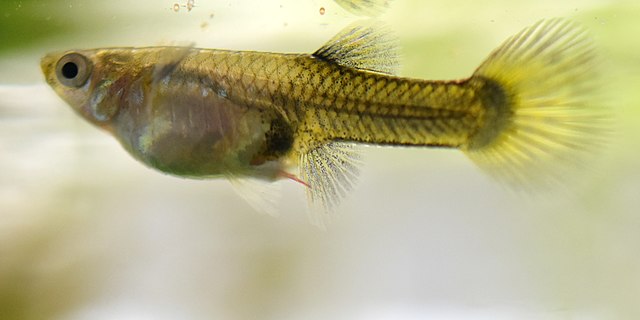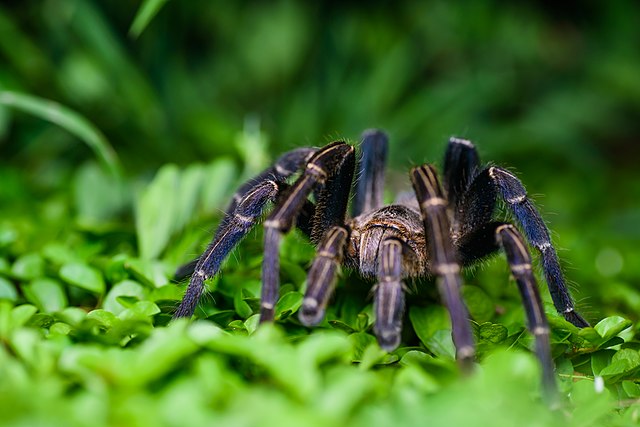In the vast tapestry of aquatic life, nano fish emerge as tiny yet vibrant threads, weaving a colorful story within aquariums worldwide. Enthusiasts, both novice and seasoned, are drawn to these diminutive marvels, captivated by their lively dispositions and captivating hues. In this comprehensive guide, we will not only delve into the intricacies of nano fish care but also explore the most common species that adorn aquariums with their petite presence.
What are Nano Fish?
Nano fish, often referred to as micro fish, encompass a variety of small fish species found in freshwater habitats across the globe. From the charming celestial pearl danios to the graceful Boraras species, these miniature wonders have found their way into the hearts of aquarium keepers.
Nano fish, owing to their petite size and vibrant colors, have become a favorite choice among aquarium enthusiasts. Their diminutive nature allows them to thrive in compact tanks, making them perfect for desktop aquariums and smaller living spaces. Furthermore, their peaceful demeanor makes them excellent companions for other small fish species, creating harmonious underwater communities.
Common Species of Nano Fish
Let’s explore some of the most popular species of nano fish that have enchanted hobbyists worldwide:
When it comes to nano fish, the options are as diverse as the colors of the rainbow. These tiny wonders, despite their size, boast a stunning array of species, each with its unique charm. Let’s dive deeper into the enchanting world of some of the most beloved nano fish species that adorn aquariums with their vibrant presence.
Celestial Pearl Danio (Danio margaritatus)
Originating from the serene waters of Myanmar, the celestial pearl danio, often referred to as galaxy rasbora, is a celestial masterpiece in its own right. With its shimmering silver body adorned with vibrant, star-like blue and orange spots, this nano fish adds a touch of cosmic allure to any aquarium. Their small size and peaceful nature make them a delightful choice for community tanks, especially when showcased against a backdrop of lush green plants.

Chili Rasbora (Boraras brigittae)
Prepare to be captivated by the fiery charm of the chili rasbora. Hailing from the tropical forests of Southeast Asia, these miniature marvels exhibit a mesmerizing blend of red and orange hues that resemble the spice they are named after.
Despite their tiny stature, their colors are nothing short of a visual feast. Keeping them in groups not only intensifies their coloration but also reflects their natural habitat, creating a captivating spectacle in your aquarium.
Dwarf Pencilfish (Nannostomus marginatus)
Elegance finds its embodiment in the form of the dwarf pencilfish. Native to the lush waters of South America, these slender nano fish are adorned with delicate patterns that resemble strokes from an artist’s brush. Their elongated bodies and intricate markings make them a favorite among aquarists seeking sophistication.
In a well-planted aquarium, these fish gracefully navigate through the greenery, adding a touch of refinement to the aquatic landscape.

Betta (Betta Splendens)
Bettas, also known as Siamese fighting fish, are not just nano fish; they are living jewels. Originating from the rice paddies of Southeast Asia, bettas are renowned for their elaborate finnage and a mesmerizing array of colors, ranging from vibrant reds and blues to subtle pastels.
Each betta is a unique masterpiece, and their ethereal beauty has made them a symbol of elegance in the aquarium world. Due to their territorial nature, they are best kept in individual tanks where they can truly shine.

Dwarf Gourami (Trichogaster lalius)
Dwarf gouramis, with their iridescent scales and charming personalities, are the crown jewels of nano fish. Originating from the labyrinthine waters of South Asia, these gouramis exhibit a spectrum of colors, from sunset oranges and fiery reds to deep, iridescent blues. Their small size and peaceful temperament make them excellent candidates for community tanks, where they add a touch of opulence and tranquility.
In the kaleidoscope of nano fish species, each variety is a living testament to the wonders of nature. As you explore the world of these tiny aquatic gems, you’ll not only witness their vibrant colors but also their unique behaviors and interactions, transforming your aquarium into a mesmerizing tableau of aquatic life.

Creating a Harmonious Nano Fish Community
Building a harmonious nano fish community is akin to orchestrating a symphony of colors and personalities within the confined boundaries of your aquarium. The key lies not just in selecting compatible species but also in understanding their behaviors and habitat preferences. Here’s how you can craft a thriving underwater ecosystem where nano fish coexist peacefully, allowing their individual charms to shine.
Understanding Compatibility
Before introducing any nano fish into your aquarium, research their compatibility thoroughly. Some species, despite their small size, can be territorial or aggressive, especially during mating seasons. Choosing fish with similar temperaments is crucial. For instance, pairing the gentle celestial pearl danios with the peaceful chili rasboras creates a visually appealing and serene environment.
Consider Habitat Preferences
Different nano fish species hail from varied natural habitats. Some, like the celestial pearl danios, prefer the open waters, while others, such as dwarf pencilfish, thrive in densely vegetated areas. By replicating their natural environment within your tank—be it with live plants, driftwood, or rocks—you provide them with a sense of security, reducing stress and promoting natural behaviors.
Balancing Male-Female Ratios
In species like bettas, understanding the importance of balanced male-female ratios is crucial. While male bettas are known for their vibrant colors, they can be territorial, especially around other males. If you intend to keep multiple bettas, it’s advisable to have one male with several females, ensuring a more peaceful cohabitation.
Providing Hiding Spots
Nano fish, despite their small size, appreciate hiding spots. These can be created using live plants like java moss or artificial caves and ornaments. Hiding spots serve multiple purposes: they offer shelter, reduce stress, and provide territories, especially in the presence of more assertive fish. This is particularly important for species like dwarf gouramis, which occasionally seek seclusion.
Maintaining Water Quality
Pristine water quality is non-negotiable for a harmonious nano fish community. Regular water changes, proper filtration, and diligent monitoring of water parameters are essential. Nano fish are more sensitive to changes in water chemistry, so stability is key. Test your water regularly and ensure it meets the specific requirements of your chosen species.
Observe and Intervene
Despite all preparations, individual fish can sometimes display aggression. Regular observation of their behaviors is vital. If you notice any signs of stress, aggression, or illness, be prepared to intervene. Having a separate quarantine tank can be a lifesaver; it provides a safe space for a troubled fish while maintaining the harmony in the main aquarium.
Creating a harmonious nano fish community is an art that demands patience, observation, and a deep understanding of aquatic life. As you watch your nano fish gracefully swim amidst lush plants, their vibrant colors contrasting and complementing each other, you’ll witness the beauty of nature unfolding within the confines of your aquarium.
Expert Tips for Nano Fish Care
Caring for nano fish goes beyond providing food and water; it’s an intricate dance of balance, patience, and understanding. These delicate aquatic beings require meticulous care to thrive and exhibit their vibrant beauty fully. Here are some expert tips tailored to ensure the well-being and longevity of your nano fish companions.
Nutrition
Nano fish, like all living beings, require a balanced and varied diet. While high-quality flakes and pellets form their staple, integrating live or frozen foods such as brine shrimp, daphnia, or bloodworms enhances their diet. These foods not only provide essential nutrients but also mimic their natural diet in the wild, promoting overall health, vibrant colors, and vitality.
Temperature and Water Parameters
Maintaining stable water parameters is paramount. Nano fish are particularly sensitive to fluctuations in temperature, pH, and water hardness. Invest in a reliable heater to maintain a consistent temperature within the recommended range. Regularly test the water for pH, ammonia, nitrites, and nitrates to ensure they fall within the species-specific ideal parameters, guaranteeing a stress-free environment.
Tank Enrichment and Stimulation
Enriching your nano fish’s environment enhances their mental and physical well-being. Introduce a variety of plants, both live and artificial, creating a stimulating and natural-looking habitat. Additionally, consider adding aquarium-safe decorations and hiding spots. These not only provide refuge but also encourage exploratory behaviors, ensuring your fish remain active and engaged.
Regular Monitoring and Health Checks
Frequent observation is your window into the health and happiness of your nano fish. Watch for any changes in behavior, appetite, or appearance. Even subtle alterations can be indicative of underlying issues. Conduct regular health checks, paying attention to their fins, scales, and eyes. Early detection of illnesses enables timely intervention and increases the chances of successful treatment.
Mindful Tank Maintenance
Routine tank maintenance is more than just a chore; it’s a lifeline for your aquatic companions. Perform regular water changes, replacing approximately 20-25% of the water every two weeks. Vacuum the substrate gently to remove debris and uneaten food. Clean or replace the filter media as needed to ensure optimal filtration. A well-maintained tank provides a pristine environment, reducing stress and enhancing the overall vitality of your nano fish.
Quarantine Protocol
Introducing new fish to your aquarium can bring unforeseen challenges. Establish a quarantine tank for new arrivals. Quarantine not only prevents the spread of diseases but also allows you to observe the newcomers closely. A period of quarantine also minimizes stress, ensuring the seamless integration of new members into your nano fish community.
Continuous Learning and Adaptation
Lastly, stay informed and be adaptable. The world of aquaculture is constantly evolving, and new discoveries are made regularly. Stay abreast of the latest research and advancements in nano fish care. Every aquarium is unique; what works for one may not work for another. Observe your fish, learn from their behaviors, and adapt your care routine accordingly.
Nurturing nano fish is a fulfilling endeavor that rewards your efforts with a kaleidoscope of colors and enchanting behaviors. By following these expert tips and embracing the art of aquarium keeping, you not only provide a sanctuary for these delicate creatures but also embark on a journey of discovery, wonder, and unparalleled joy.
Embracing the Nano Fish Realm
Incorporating nano fish into your aquarium transcends the act of pet-keeping; it’s an art form. Each species brings a unique charm, a vibrant stroke to the canvas of your aquatic masterpiece. By understanding their distinct characteristics and providing meticulous care, you can create a thriving underwater world where these tiny wonders flourish.








